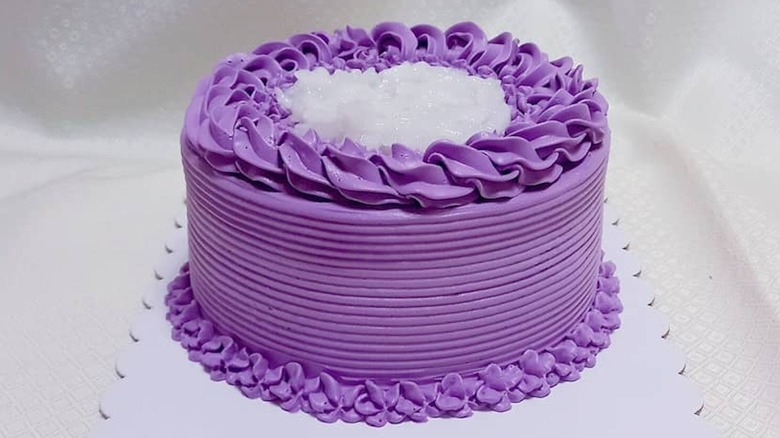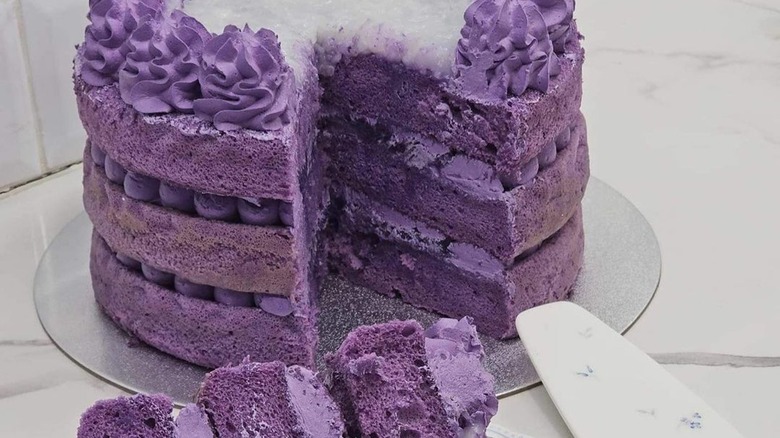The Ingredient That Gives Filipino Ube Macapuno Cake Its Iconic Color
Among the most unique cakes from around the world, there exists a gem cherished by cake connoisseurs: ube macapuno. This divine dessert hails from the Philippines, a nation renowned for its deep culinary heritage. The history of ube macapuno traces back to the rich tapestry of Filipino culture. Ube, a purple yam indigenous to the Philippines, has been a staple ingredient in Filipino cuisine for centuries, revered for its distinct taste and enchanting hue.
Traditional ube macapuno is crafted using a harmonious blend of ingredients. At its core lies the majestic ube, a vegetable revered not only for its exquisite flavor but also for the captivating violet tint it imparts. This royal shade, reminiscent of amethysts, is what sets ube macapuno apart, making it a visual feast as much as a confectionery delight. And, although white varieties of ube do exist, it's the purple style that has made this yam famous.
Another key player in this iconic Southeast Asian cake is macapuno. Macapuno, often referred to as "coconut sport," is a rare and prized coconut grown in the Philippines. Unlike regular coconut, macapuno possesses a unique texture characterized by its thick, gelatinous flesh, which adds an extra layer of richness and creaminess. This rare delicacy is a coveted element in Filipino dishes, particularly desserts such as halo-halo, buko pie, macaroons, candy, and ice cream.
Ube is a staple of Filipino cuisine
The feature that truly captivates the imagination of dessert lovers is the tuber's role in giving ube macapuno its legendary color. The vibrant purple hue of ube is a result of its natural pigments, specifically anthocyanins, which are also found in other foods like blueberries, eggplant, and grapes. This phenomenon not only adds visual intrigue but also underscores the authenticity and purity of this darling creation.
When it comes to taste, ube macapuno boasts a medley of flavors that infuse with one another beautifully. The velvety smoothness of the ube intertwines with the luscious sweetness of macapuno. Each bite offers a balance of earthy notes from the ube as well as a tropical tang from the macapuno, leaving a lingering sensation of pure bliss on the palate. The popularity of ube macapuno with baked goods aficionados is a testament to its irresistible allure. Pastry chefs and home bakers have embraced this purple Filipino delicacy, incorporating it into their repertoire of sweet treats, including donuts, breads, pastillas, brightly-colored ube cheesecake, and, of course, ube macapuno.

